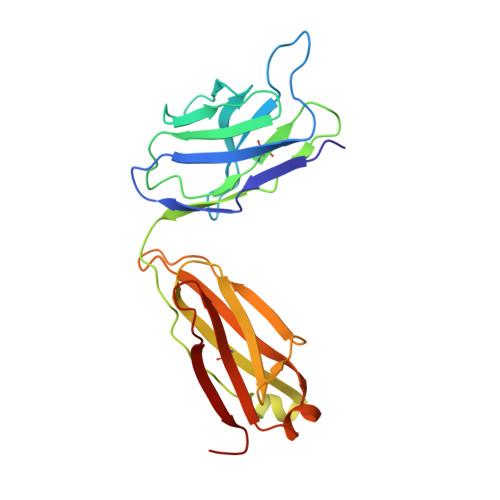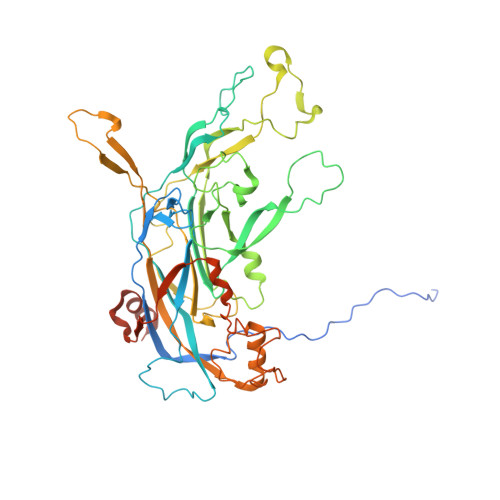Structural basis for the shared neutralization mechanism of three classes of human papillomavirus type 58 antibodies with disparate modes of binding.
He, M., Chi, X., Zha, Z., Li, Y., Chen, J., Huang, Y., Huang, S., Yu, M., Wang, Z., Song, S., Liu, X., Wei, S., Li, Z., Li, T., Wang, Y., Yu, H., Zhao, Q., Zhang, J., Zheng, Q., Gu, Y., Li, S., Xia, N.(2021) J Virol 95
- PubMed: 33472937
- DOI: https://doi.org/10.1128/JVI.01587-20
- Primary Citation of Related Structures:
7DNH, 7DNK, 7DNL - PubMed Abstract:
Human papillomavirus type 58 (HPV58) is associated with cervical cancer and poses a significant health burden worldwide. Although the commercial 9-valent HPV vaccine covers HPV58, the structural and molecular-level neutralization sites of the HPV58 complete virion are not fully understood. Here, we report the high-resolution (∼3.5 Å) structure of the complete HPV58 pseudovirus (PsV58) using cryo-electron microscopy (cryo-EM). Three representative neutralizing monoclonal antibodies (nAbs 5G9, 2H3 and A4B4) were selected through clustering from a nAb panel against HPV58. Bypassing the steric hindrance and symmetry-mismatch in the HPV Fab-capsid immune-complex, we present three different neutralizing epitopes in the PsV58, and show that, despite differences in binding, these nAbs share a common neutralization mechanism. These results offer insight into HPV58 genotype specificity and broaden our understanding of HPV58 neutralization sites for antiviral research. IMPORTANCE Cervical cancer primarily results from persistent infection with high-risk types of human papillomavirus (HPV). HPV type 58 (HPV58) is an important causative agent, especially within Asia. Despite this, we still have limited data pertaining to the structural and neutralizing epitopes of HPV58, and this encumbers our in-depth understanding of the virus mode of infection. Here, we show that representative nAbs (5G9, 10B11, 2H3, 5H2 and A4B4) from three different groups share a common neutralization mechanism that appears to prohibit the virus from associating with the extracellular matrix and cell surface. Furthermore, we identify that the nAbs engage via three different binding patterns: top-center binding (5G9 and 10B11), top-fringe binding (2H3 and 5H2), and fringe binding (A4B4). Our work shows that, despite differences in the pattern in binding, nAbs against HPV58 share a common neutralization mechanism. These results provide new insight into the understanding of HPV58 infection.
Organizational Affiliation:
State Key Laboratory of Molecular Vaccinology and Molecular Diagnostics, School of Public Health, School of Life Sciences, Xiamen University, Xiamen, China 361102.
















